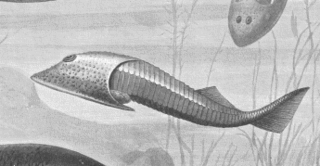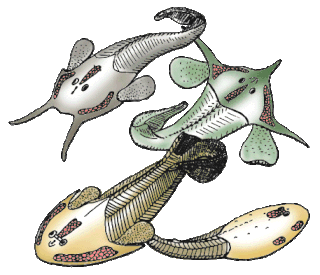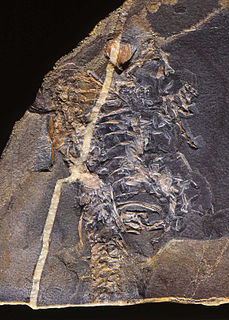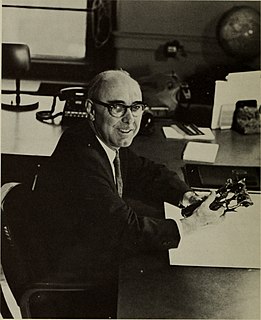Latest publishing
The latest edition, the fifth edition, was cowritten with Michael Morales and Eli C. Minkoff, and has been revised to incorporate recent discoveries and current developments in the field of vertebrate evolution. This new addition includes entirely new sections. Some examples of these are conodonts, primates, and dinosaurs. Some new topics that the fifth edition discuss are: [3]
- Analysis of morphological and molecular data
- Early ruling reptiles
- Basic adaptation of ungulates
- Early diversification of vertebrates
- The evolution of dinosaurs
- The origin of mammals
The fifth edition has generally received praise from both professors and students using this textbook on the college level. It has, however, received mild criticism for its out-of-date material. Others however argue that the broad scope of the edits in the fifth edition make up for any generalizations pertaining to specific details related to geological paleontology.

Amniotes are a clade of tetrapod vertebrates that comprise sauropsids and synapsids. They are distinguished by a membrane (amnion) protecting the embryo and a lack of a larval stage. Thanks to this, amniotes lay eggs on land or retain them within the mother, unlike anamniotes, which typically lay eggs in water. Older sources, particularly before the 20th century, may refer to amniotes as "higher vertebrates" and anamniotes as "lower vertebrates", based on the antiquated idea of the evolutionary great chain of being. The term amniote comes from the Greek ἀμνίον amnion, "membrane surrounding the fetus", and earlier "bowl in which the blood of sacrificed animals was caught", from ἀμνός amnos, "lamb".

Vertebrate paleontology is the subfield of paleontology that seeks to discover, through the study of fossilized remains, the behavior, reproduction and appearance of extinct animals with vertebrae or a notochord. It also tries to connect, by using the evolutionary timeline, the animals of the past and their modern-day relatives.

Cephalaspidomorphs are a group of jawless fishes named for Cephalaspis of the osteostracans. Most biologists regard this taxon as extinct, but the name is sometimes used in the classification of lampreys, because lampreys were once thought to be related to cephalaspids. If lampreys are included, they would extend the known range of the group from the Silurian and Devonian periods to the present day. They are the closest relatives of jawed fishes, who emerged from within them and they would survive if the jawed fish are included.

Ostracoderms are the armored jawless fish of the Paleozoic Era. The term does not often appear in classifications today because it is paraphyletic or polyphyletic, and thus does not correspond to one evolutionary lineage. However, the term is still used as an informal way of loosely grouping together the armored jawless fishes.

Diadectes is an extinct genus of large reptiliomorphs or synapsids that lived during the early Permian period. Diadectes was one of the first herbivorous tetrapods, and also one of the first fully terrestrial animals to attain large size.

The Society of Vertebrate Paleontology (SVP) is a professional organization that was founded in the United States in 1940 to advance the science of vertebrate paleontology around the world.

Nothosaurs were Triassic marine sauropterygian reptiles that may have lived like seals of today, catching food in water but coming ashore on rocks and beaches. They averaged about 3 metres (10 ft) in length, with a long body and tail. The feet were paddle-like, and are known to have been webbed in life, to help power the animal when swimming. The neck was quite long, and the head was elongated and flattened, and relatively small in relation to the body. The margins of the long jaws were equipped with numerous sharp outward-pointing teeth, indicating a diet of fish and squid.

Michael James Benton is a British palaeontologist, and professor of vertebrate palaeontology in the School of Earth Sciences at the University of Bristol. His published work has mostly concentrated on the evolution of Triassic reptiles but he has also worked on extinction events and faunal changes in the fossil record.

Mammaliaformes ("mammal-shaped") is a clade that contains the crown group mammals and their closest extinct relatives; the group radiated from earlier probainognathian cynodonts. It is defined as the clade originating from the most recent common ancestor of Morganucodonta and the crown group mammals; the latter is the clade originating with the most recent common ancestor of extant Monotremata, Marsupialia, and Placentalia. Besides Morganucodonta and the crown group mammals, Mammaliaformes includes Docodonta and Hadrocodium as well as the Triassic Tikitherium, the earliest known member of the group.

Thecodontia, now considered an obsolete taxonomic grouping, was formerly used to describe a diverse "order" of early archosaurian reptiles that first appeared in the latest Permian period and flourished until the end of the Triassic period. All of them were built somewhat like crocodiles but with shorter skulls, more erect pose and usually somewhat lighter. The group includes the ancestors of dinosaurs, pterosaurs, and crocodilians, as well as a number of extinct forms that did not give rise to any descendants. The term thecodont is still used as an anatomical description of the tooth morphology seen in these species and others.
Diarthrognathus is an extinct genus of tritheledontid cynodonts, known from fossil evidence found in South Africa and first described in 1958 by A.W. Crompton. The creature lived during the Early Jurassic period, about 200 million years ago. It was carnivorous and small, slightly smaller than Thrinaxodon, which was under 50 centimetres (20 in) long.
Tylocephalonyx is an extinct chalicothere from the Miocene of North America.

Aulophyseter is an extinct genus of sperm whales from the Miocene formations of the west and east coasts of North America.
Apodops is an extinct genus of early caecilians from the Early Eocene Itaboraí Formation of Brazil. The type species of the genus is A. pricei.

The endocranium in comparative anatomy is a part of the skull base in vertebrates and it represents the basal, inner part of the cranium. The term is also applied to the outer layer of the dura mater in human anatomy.

The anamniotes are an informal group comprising the fishes and the amphibians, the so-called "lower vertebrates", which lay their eggs in water. They are distinguished from the amniotes, the "higher vertebrates", which lay their eggs on land or retain the fertilized egg within the mother.
Shantungosuchus is an extinct genus of Early Cretaceous crocodyliform found in China. It includes three species: Shantungosuchus chuhsienensis and S. brachycephalus, which were both described by Yang Zhongjian – usually referred to as "Young" – in 1961 and 1982, and S. hangjinensis, which was described by Xiao-Chun Wu et al in 1994. S. chuhsienensis is the type for this genus.

Reptiles arose about 310–320 million years ago during the Carboniferous period. Reptiles, in the traditional sense of the term, are defined as animals that have scales or scutes, lay land-based hard-shelled eggs, and possess ectothermic metabolisms. So defined, the group is paraphyletic, excluding endothermic animals like birds and mammals that are descended from early traditionally-defined reptiles. A definition in accordance with phylogenetic nomenclature, which rejects paraphyletic groups, includes birds while excluding mammals and their synapsid ancestors. So defined, Reptilia is identical to Sauropsida.

Edwin Harris "Ned" Colbert was a distinguished American vertebrate paleontologist and prolific researcher and author.
Triumph of the Vertebrates is a 2013 British documentary film by David Attenborough. It is about the evolution of vertebrates. The first part is From the Seas to the Skies, while the second part is Dawn of the Mammals.















